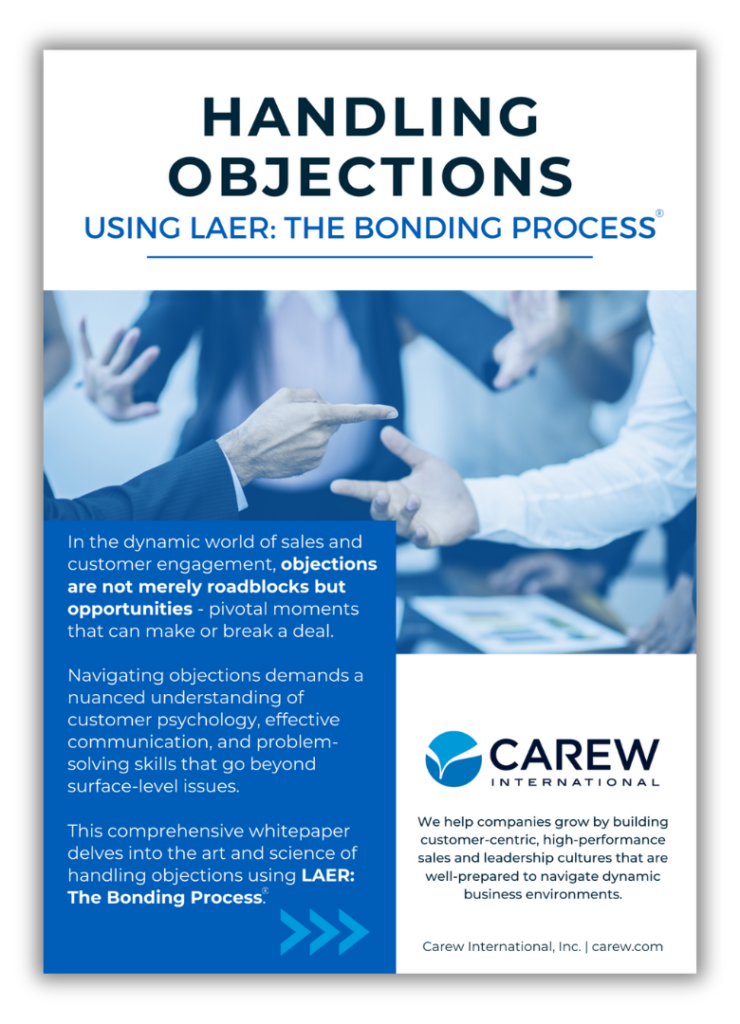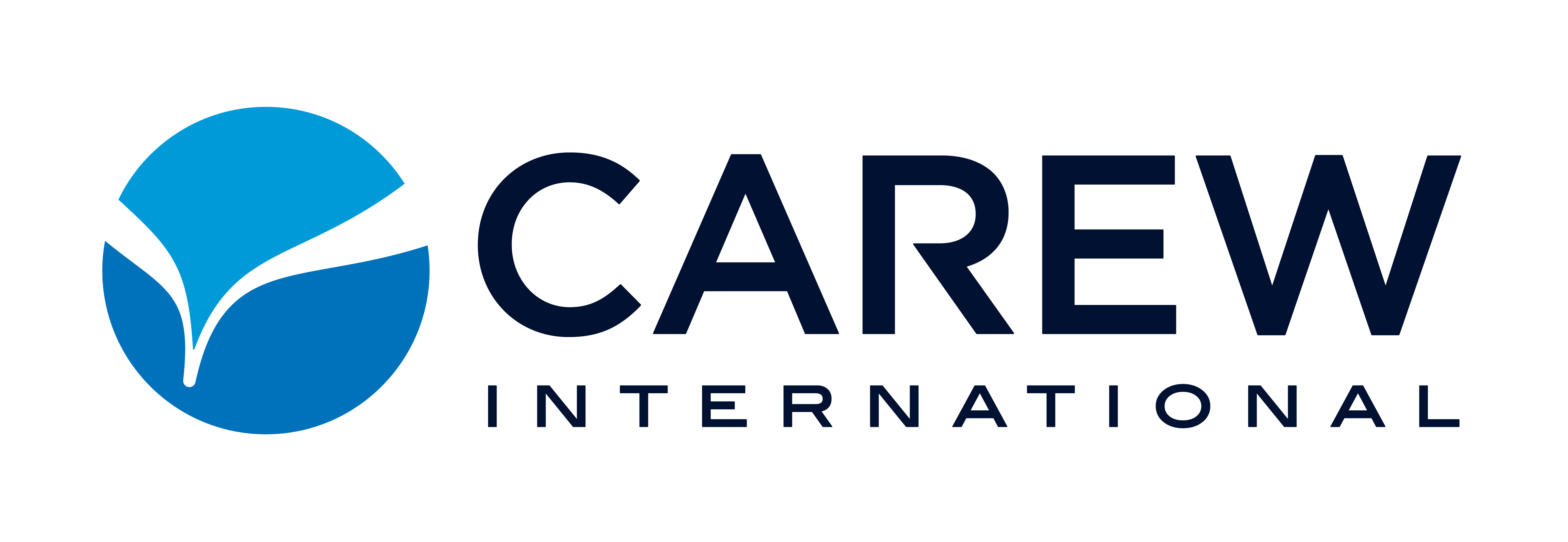It’s no secret—sales success isn’t just about hitting numbers. It’s about building trust, solving problems, and creating meaningful connections with your customers.
But in today’s fast-paced world, where buyers are informed and options are endless, how can sellers rise above the noise?
Enter the LAER Bonding Process®—a proven framework that shifts the focus from selling to serving. If your goal is to foster trust, navigate objections, and deliver tailored solutions, LAER might just be your game-changer.
Let’s dive into what makes this approach so essential and how you can start using it to transform your sales conversations.
What is the LAER Bonding Process®?
It’s a method we teach in Carew’s flagship sales training program, Dimensions of Professional Selling®. At its core, LAER stands for:
- Listen: Give customers your undivided attention.
- Acknowledge: Validate their concerns and show empathy.
- Explore: Dive deeper to uncover the root of their needs.
- Respond: Deliver solutions tailored to their unique challenges.
This isn’t about following a script; it’s about cultivating trust through authentic, two-way dialogue. Whether you’re addressing objections, handling frustration, or guiding a prospect toward a solution, LAER creates a structure that works every time.
Why is LAER Essential for Selling?
Modern buyers have evolved—they expect personalized experiences and genuine empathy. Yet, many sales professionals fall into the trap of pushing solutions without truly understanding the customer.
Think about it: Have you ever lost a sale to a simple objection like these?
- “Your price is too high.”
- “I need more time to decide.”
- “We’re happy with our current provider.”
For many, these statements feel like dead ends. But with LAER, they become opportunities to build trust and strengthen relationships.
The framework doesn’t just help you navigate objections; it ensures that every conversation leaves the customer feeling understood and valued.
Breaking Down the LAER Framework
1. Listen
Stop talking and start understanding.
Active listening isn’t just about hearing words—it’s about picking up on tone, emotions, and unspoken cues. Top-performing sales professionals spend 57% of their time listening during calls.
>> Ask yourself: Are you really letting your customers speak, or are you planning your reply while they talk?
2. Acknowledge
Show that you understand without rushing to a solution.
Whether it’s a verbal response like, “I see why this is important to you,” or a simple nod, acknowledgment builds rapport. It doesn’t mean agreeing—it means respecting their perspective.
>> Check out this article for more tips on how to acknowledge a customer’s concern.
3. Explore
Ask thoughtful, open-ended questions to uncover their real priorities.
Often, what a customer says they need isn’t the full picture. By exploring, you can identify hidden challenges and tailor your approach.
4. Respond
Now it’s time to deliver.
But remember—your response should directly address their unique needs, using everything you’ve learned through LAER. This step isn’t about selling harder; it’s about offering solutions that resonate.
The Benefits of LAER
Implementing the LAER Bonding Process® can transform your sales performance:
- Stronger Customer Relationships: Trust leads to loyalty.
- Improved Close Rates: Customers are more likely to buy from sellers who truly understand their needs.
- Greater Confidence: A clear framework makes every sales interaction feel purposeful.
- Enhanced Personal Relationships: The principles of LAER aren’t confined to the boardroom. They’re just as powerful at home or in daily interactions. Picture this: defusing tension with an angry neighbor by listening intently, or gaining insight into your teenage daughter’s world by exploring her perspective before responding. The same approach that closes deals can transform relationships, proving that LAER is as versatile as it is effective.
LAER isn’t just a tool for professional success; it’s a mindset that fosters better communication, understanding, and connection in all areas of life. By mastering its principles, you can enhance not only your sales performance but also your personal relationships.
Start Transforming Your Sales Conversations Today
Success in sales starts with meaningful conversations. The LAER Bonding Process® isn’t just a technique—it’s a mindset that prioritizes understanding, empathy, and connection.
Don’t just sell—bond. With LAER, you’ll not only close deals but build lasting relationships that drive long-term success.

Ready to Master the LAER Bonding Process®?
If you’re serious about closing more deals and strengthening your sales conversations, now is the time to dive deeper. Download our exclusive White Paper: LAER: The Bonding Process to Handle Objections and Close More Sales.
Inside, you’ll find actionable insights and proven strategies to handle objections with confidence, build trust, and drive results.
Complete the form below to access your free White Paper and take the first step toward transforming your approach to selling.





